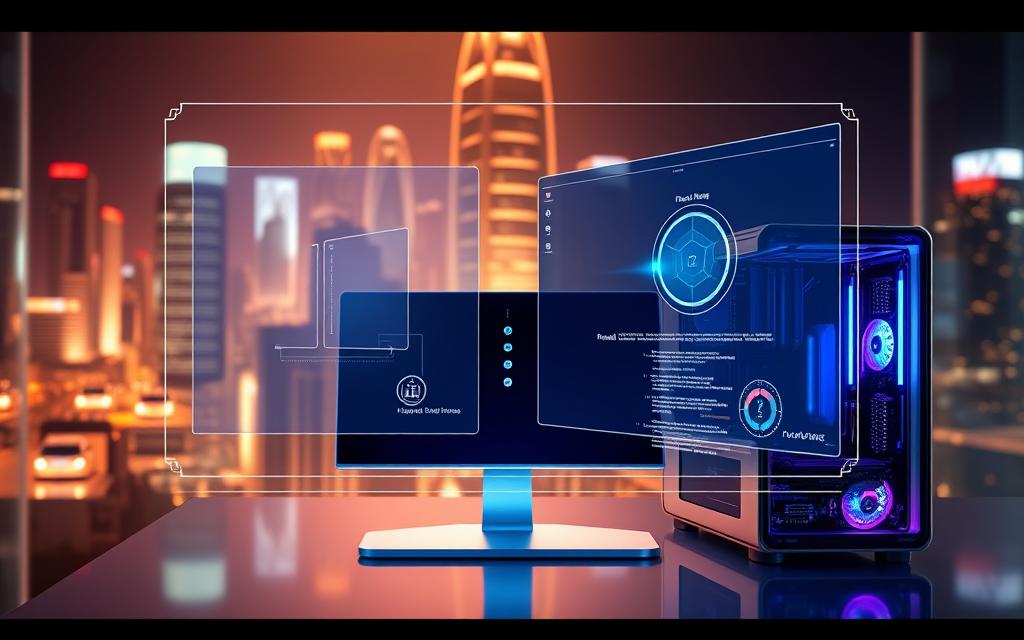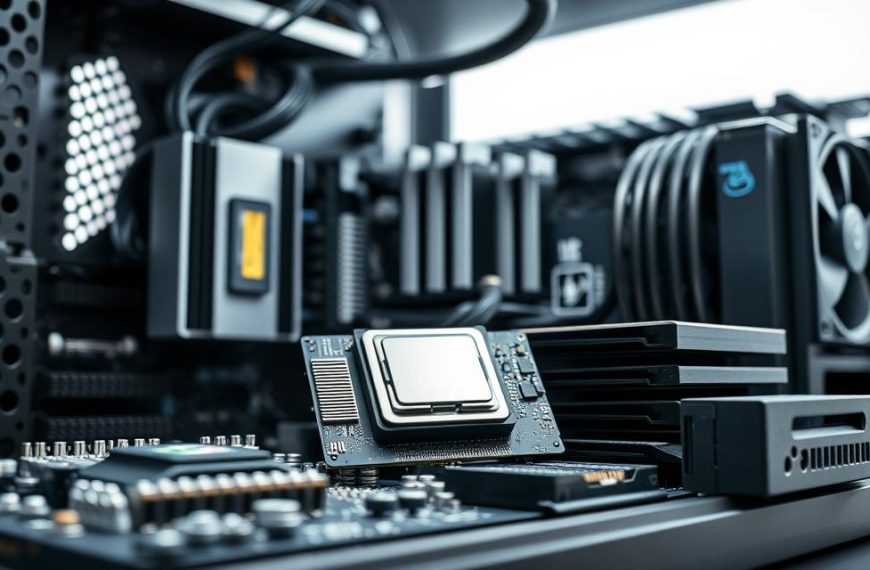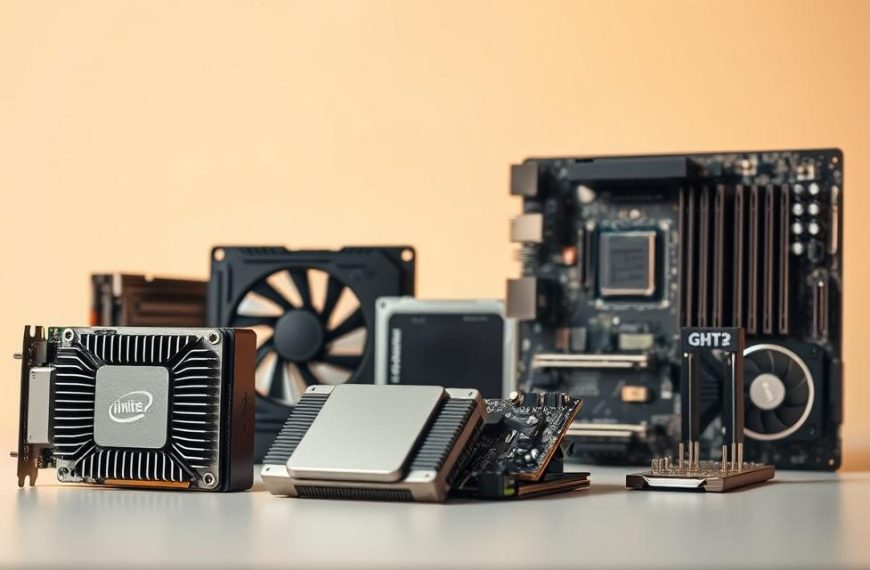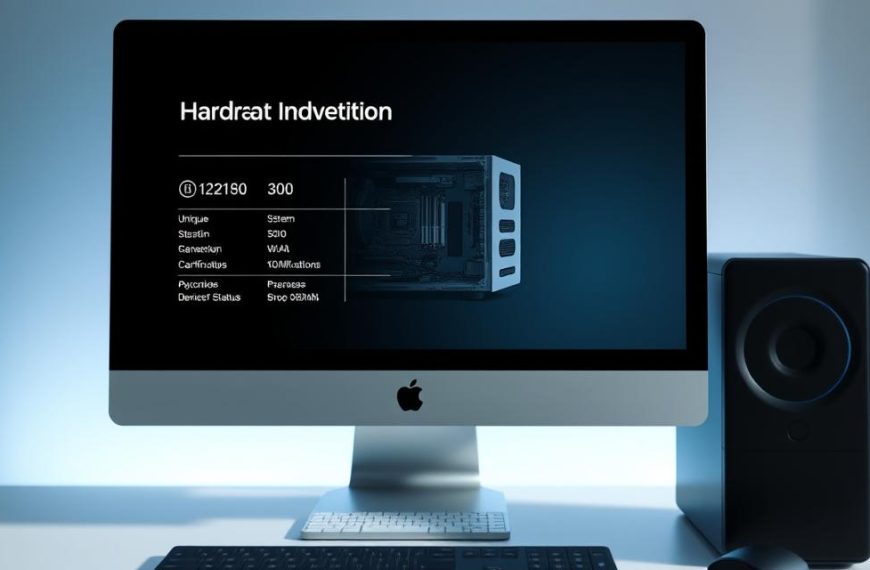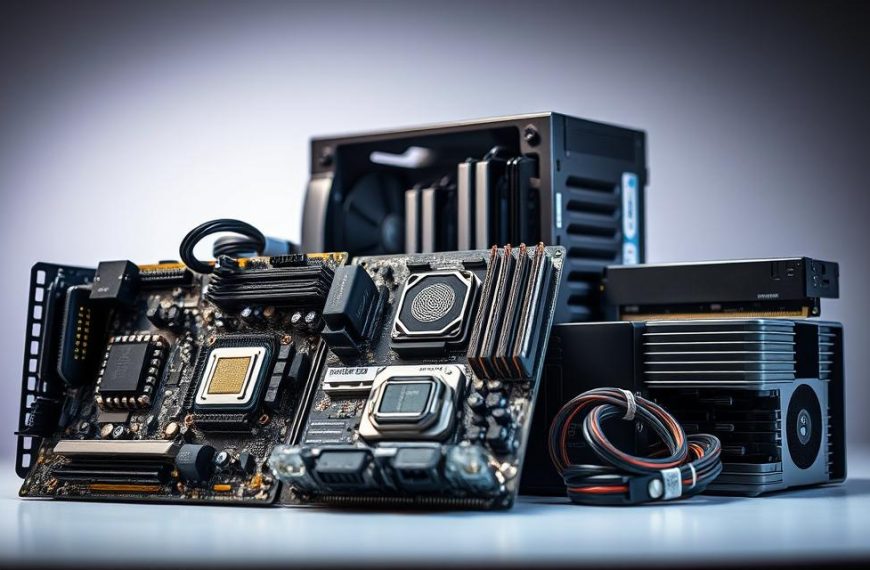Dual boot technology allows users to run multiple operating systems on a single computer. This clever approach lets tech fans switch between different systems smoothly. It’s a brilliant way to boost your computer’s potential.
About 30% of users dual boot Windows and Linux for specific software needs. This setup offers great flexibility without buying extra devices. It’s perfect for those who want to use different systems’ strengths.
Dual booting is great for users who want a versatile computing setup. It’s useful for software developers, gamers, and curious tech explorers. This method opens up new ways to use your computer.
Having multiple systems on one computer changes how we use technology. It helps create more adaptable and efficient setups. Users can tailor their computer to meet their unique needs.
Understanding Dual Boot Systems and Their Benefits
Dual boot setups let you run multiple operating systems on one computer. This clever approach opens up new possibilities for software access and exploration. Users can enjoy more flexibility in their computing experience.
Dual booting offers unmatched versatility in digital workspaces. Nearly 75% of dual boot users use this setup to access special software unavailable on a single system.
What is a Dual Boot Configuration?
A dual boot setup involves installing two different operating systems on one computer. Users can choose their preferred system at startup through a boot menu.
Advantages of Running Multiple Operating Systems
- Access to diverse software ecosystems
- Enhanced flexibility for different computing needs
- Ability to test new operating systems without dedicated hardware
- Improved performance for resource-intensive applications
Common Use Cases for Dual Booting
| User Type | Primary Purpose |
|---|---|
| Software Developers | Testing cross-platform applications |
| IT Professionals | System compatibility testing |
| Creative Professionals | Accessing platform-specific design tools |
Dual booting provides a unique opportunity to maximise your computing potential without investing in multiple devices.
Technical factors are key for a successful dual boot setup. Experts suggest at least 8GB of RAM, with 16GB being ideal for smooth operation.
Processors like AMD Ryzen 5 5600X or Intel Core i5-11400F work well for multi-operating system environments. Careful planning is crucial when preparing for a dual boot configuration.
Backing up data is vital to avoid potential loss during installation. This step ensures a smooth transition to your new dual boot system.
Can We Use 2 Operating Systems on One Computer: Technical Requirements
Setting up a dual boot system needs careful thought about hardware and partition management. This process involves specific technical requirements. These ensure smooth operation of multiple operating systems on one computer.
Key dual boot requirements include:
- Sufficient storage space (50-100GB recommended)
- Compatible processor architecture
- Adequate system memory
- Appropriate bootloader configuration
Hardware compatibility is crucial for successful dual booting. Different operating systems have varying system requirements. These must be carefully checked before installation.
Partition management is vital for a functional dual boot environment. Users need to:
- Create unallocated space on the hard drive
- Resize existing partitions
- Prepare a bootable USB or DVD
Boot mode configuration is equally important. UEFI or Legacy boot modes must match between the installation media and target computer. This ensures successful booting.
| Requirement | Specification |
|---|---|
| Storage Space | 50-100GB free space |
| Partition for New OS | 25GB minimum recommended |
| Boot Mode Compatibility | UEFI or Legacy matching |
About 30% of users choose dual booting for software compatibility. This allows access to apps specific to different operating systems.
With proper preparation, dual booting can offer great flexibility for computer users.
Step-by-Step Guide to Setting Up Dual Boot
Setting up a dual boot system needs careful planning. This guide will help you install multiple operating systems on one computer. Follow these steps for a successful setup.
- Sufficient storage space (minimum 50-100 GB recommended)
- Bootable media for your chosen operating system
- Backup of all critical data
- UEFI-compatible computer
Preparing Your Computer for Installation
First, back up all your important data. This prevents loss during installation. Check your computer’s storage capacity.
You’ll need at least 50-100 GB of free space. This ensures optimal performance for your dual boot setup.
Creating Bootable Installation Media
Use tools like Rufus to create bootable media. Here’s how:
- Download the ISO file for your desired operating system
- Download and install Rufus from rufus.ie
- Select your USB drive
- Choose the downloaded ISO file
- Click ‘Start’ to create the bootable USB
Partitioning Your Hard Drive
Partitioning is key for a successful dual boot. Use Windows Disk Management to create a new partition. For Ubuntu, allocate about 25 GB (25,000 MB).
Make sure the partition is formatted correctly. Label it as ‘Unallocated Space’.
Installing the Second Operating System
To finish the installation:
- Enter BIOS by pressing F2, F12, or Delete during startup
- Disable Secure Boot
- Change boot order to prioritise USB drive
- Boot from USB installation media
- Select ‘Custom’ installation option
- Choose the previously created partition
- Complete the installation process
After installation, the Grub bootloader will appear. It lets you choose between operating systems at startup.
Managing Files and Resources Between Operating Systems
Dual booting poses unique file-sharing challenges between OS environments. Creating a cross-platform access strategy requires careful planning and understanding of file system compatibility.
The simplest method involves creating a shared partition readable by both operating systems. Users often choose file systems offering maximum compatibility.
- FAT32: Compatible with most operating systems
- exFAT: Supports larger file sizes
- NTFS: Preferred for Windows systems
When implementing file sharing, consider these key strategies:
- Select a universal file system that supports both operating systems
- Allocate a dedicated partition for shared files
- Ensure proper mounting permissions
Many software developers and designers use dual boot setups to access specialised applications. Approximately 30% of IT professionals adopt multi-operating system environments to boost workflow flexibility.
Data safety is vital when managing resources across different operating systems. Always keep comprehensive backups before transferring files or modifying partitions.
This precaution helps prevent potential data loss and ensures a smooth dual-boot experience.
Troubleshooting Common Dual Boot Issues
Dual boot systems can face challenges that disrupt your computing experience. Learning about common dual boot problems and solutions is vital. This knowledge helps maintain a smooth operating system environment.
Users often encounter three main issue categories with dual boot problems:
- Bootloader repair complications
- OS conflict resolution challenges
- Partition management difficulties
Bootloader errors are quite troublesome. Approximately 50% of dual-boot setups experience boot process interruptions when one operating system becomes corrupted. Luckily, most issues can be fixed through clever troubleshooting techniques.
| Problem Type | Potential Solution | Success Rate |
|---|---|---|
| Bootloader Malfunction | Reinstall Bootloader | 85% |
| OS Partition Corruption | System Recovery Tools | 75% |
| Hardware Compatibility | BIOS/UEFI Configuration | 90% |
Key steps for OS conflict resolution include:
- Disable Fast Boot in Windows settings
- Check BIOS/UEFI boot configuration
- Verify partition allocation
- Use recovery tools for bootloader repair
For tech-savvy users, specialised recovery software can help solve complex dual boot issues. Remember to keep thorough backups. This protects against data loss during troubleshooting.
Alternatives to Dual Booting: Virtualisation and Live Systems
Modern computing offers flexible solutions beyond traditional dual booting. Virtualisation and live systems provide powerful options for users. These alternatives create versatile operating system experiences.
Virtualisation lets you run multiple operating systems on one computer. Tools like VirtualBox and VMware create virtual machines within your main system. This means you can switch between different OS environments without rebooting.
- Requires at least 8 GB RAM for optimal performance
- Supports running multiple OS simultaneously
- Ideal for software testing and development
Live systems offer another clever way to use different operating systems. These run from USB drives without installation. Many Linux distributions come with live system options.
You can test or use an OS temporarily with live systems. It’s a handy way to try new operating systems.
Performance is key when choosing between virtualisation and dual booting. Dual-booting often works better due to direct hardware access. Virtualisation may have some resource limits.
Virtualisation provides flexibility, but dual booting remains superior for high-performance computing needs.
Different tasks suit different OS alternatives. Developers might prefer virtualisation for testing new software. Gamers might choose dual booting for the best system performance.
Conclusion: Is Dual Booting Right for You?
Dual booting offers flexibility for tech-savvy users. It allows multiple operating systems on one device. This setup unlocks powerful opportunities to explore different OS environments.
Users must assess their technical skills and computing needs. Switching between Windows, macOS, and Linux provides unparalleled OS choice. This enables access to specialised software and tools across platforms.
Challenges include restarting when switching systems and potential file compatibility issues. Users should evaluate their workflow needs and available storage space. Technical comfort level is also crucial before implementing this setup.
Dual booting maximises a computer’s potential without buying multiple devices. With proper planning, it can transform a single machine. Your computer becomes a versatile powerhouse for various computing tasks.

